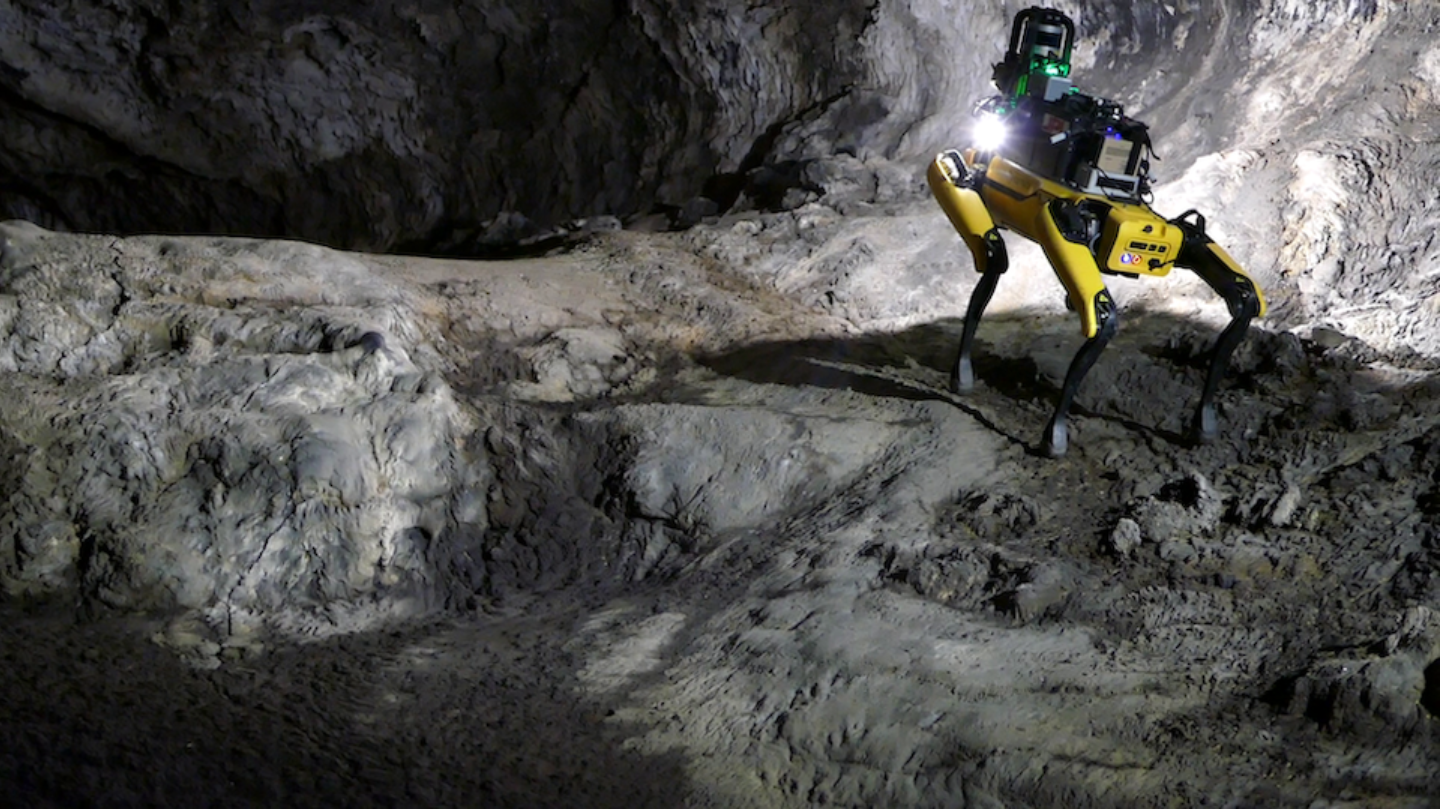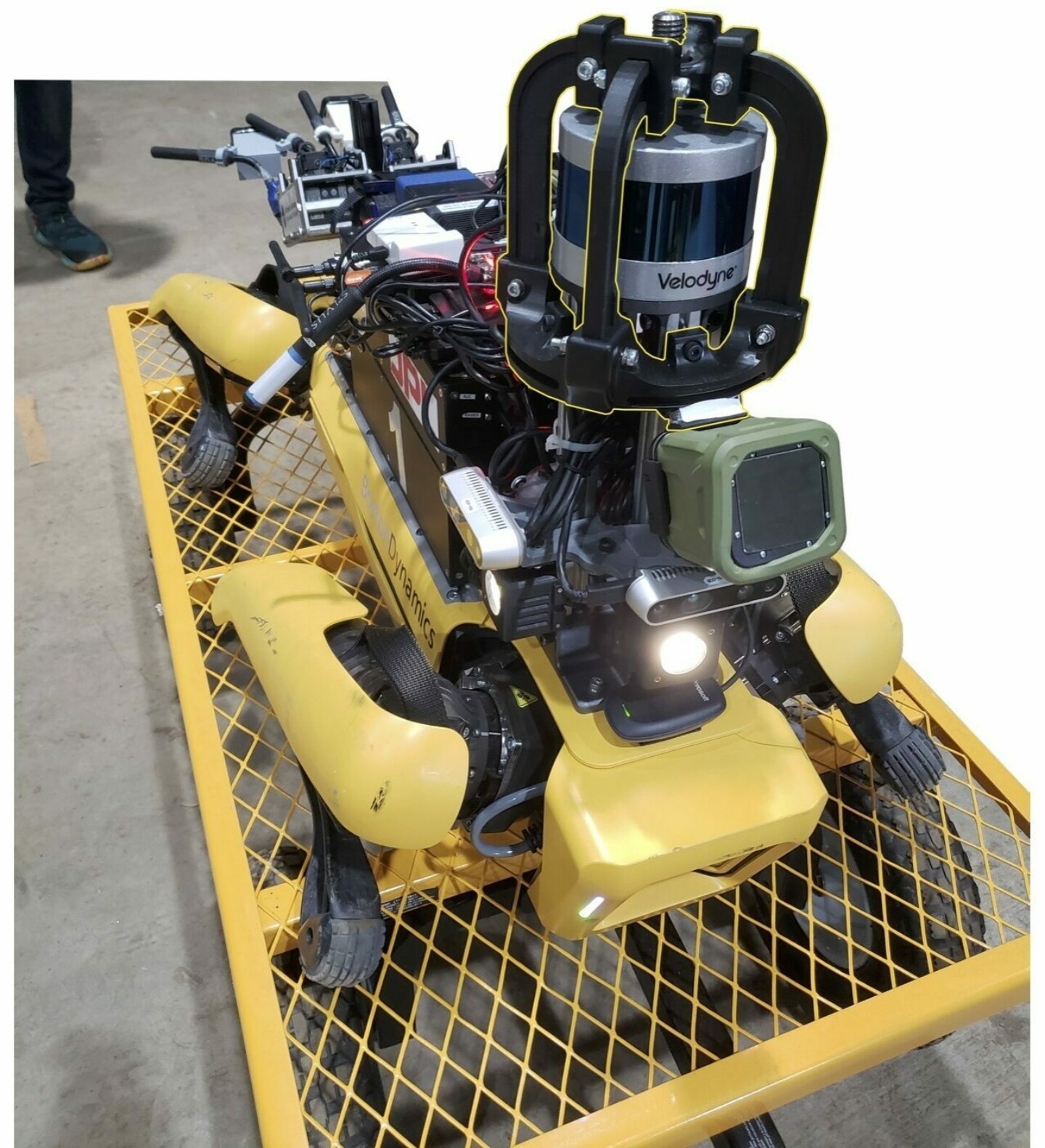Metal and carbon fiber 3D printer manufacturer Markforged is helping a collaborative team take on the Defence Advanced Research Projects Agency’s (DARPA) Subterranean Challenge. The project aims to develop fully autonomous robotic systems capable of traversing underground environments such as caves during planetary explorations.
The team in question, named CoSTAR, is made up of 60 engineers from across the globe belonging to the NASA Jet Propulsion Laboratory (JPL), Massachusetts Institute of Technology (MIT), California Institute of Technology (Caltech), Korea Advanced Institute of Science and Technology (KAIST), and the Luleå University of Technology in Sweden (LTR).
Along with nine other teams, CoSTAR is participating in the three-year challenge, which is ultimately providing a starting point for enabling underground exploration on the moon, Mars, and possibly even the moons of other planets.
Markforged is CoSTAR’s supplier and sponsor for the Subterranean Challenge. Its 3D printers have enabled the team to apply quick iterations and fixes to their autonomous robots at the point of need throughout the competition.

3D printing extra components on-demand
The Subterranean Challenge is made up of three circuits – a tunnel circuit, urban circuit, and cave circuit – and a final event, which all feature vastly different terrain and conditions. The team’s autonomous robot needs to be capable of successfully navigating these different scenarios, and CoSTAR also needed to carry out quick field maintenance for any damaged parts along the way and rapidly iterate on designs to continually improve the robot.
Using Spot robots from Boston Dynamics, the team needed to quickly design and produce extra components such as brackets and enclosures to ensure they could complete the competition’s circuits and decided upon 3D printing as the vehicle through which to do this.
The CoSTAR team members turned to Markforged’s 3D printer and Eiger software to produce strong and lightweight functional parts for the robots and found the 3D printed brackets and mounts actually outperformed their aluminum counterparts. The team also produced a 3D printed cage for the robot’s $7,000 lidar sensor using Markforged printers and the firm’s continuous carbon fiber reinforced material. In total, the team’s robots, named Nebula, contained around 15 3D printed parts.
The team took a Markforged 3D printer to the challenge’s first two rounds, which they set up in their hotel rooms the night before, and printed spare parts overnight to use in the field the next day. While the 3D printed parts took some knocks during the challenges, they could reportedly be reused without any failures.

Paving the way for subterranean planetary exploration
The DARPA Subterranean Challenge is more than just a competition and could provide a pathway towards exploring underground environments on the moon and Mars. The team hopes to facilitate NASA JPL missions of this nature in the future to investigate signs of, and potential for, life in these extraterrestrial environments.
NASA’s interest in autonomous robots for space applications is continuing to grow, having previously investigated the viability of using soft robotics for space exploration and assembly, and in 2019 commissioned the SEEKER project involving two free-flying autonomous robots designed to inspect and monitor spacecraft while in space.
As part of the project, product development service provider The Technology House used Digital Light Synthesis (DLS) 3D printing technology from Carbon to produce four high-performance thrusters for the cold-gas propulsion system within the Seeker robots. These thrusters were reportedly the first certified plastic 3D printed parts in “actual space.”
Subscribe to the 3D Printing Industry newsletter for the latest news in additive manufacturing. You can also stay connected by following us on Twitter and liking us on Facebook.
Looking for a career in additive manufacturing? Visit 3D Printing Jobs for a selection of roles in the industry.
Featured image shows the team’s autonomous robots (named Nebula) each have roughly 15 Markforged 3D printed parts. Image via Markforged.



